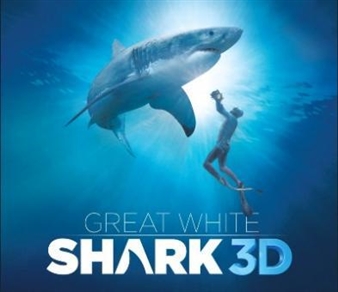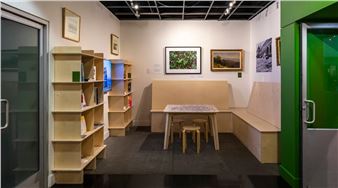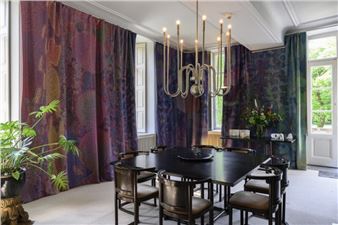Saba Farhoudnia: Forsaken with a Side of Pickles
Marking her second solo exhibition at Fou Gallery, New YorkÔÇôbased Iranian artist Saba Farhoudnia presents Forsaken with a Side of Pickles, on view from September 18 through November 12. In this body of work, Farhoudnia continues to explore the complex relationship between human presence and natural forces as these opposing elements interact and unfold within urban and post-urban landscapes. The exhibition is curated by Nina Chkareuli-Mdivani.
Within this exhibition, FarhoudniaÔÇÖs new paintings examine what endures when cultural landmarks are abandoned or overtaken by nature. On multilayered, sanded gesso canvases, she uses acrylic and alcoholic ink to mark points of no return, balancing weighty themes with humor and a light-hearted undertone. Her work suggests that traces of presence persist even when perspective is uncertain ÔÇö after all, subtle reminders of life continue to appear across her imagined landscapes.
Some of the masterfully drawn architectural references on FarhoudniaÔÇÖs canvases are inspired by real structures, such as the Azadi Tower in Tehran and an abandoned sanatorium in Tskaltubo, Georgia. She imagines these sites both abandoned and animated by fleeting human or animal figures, offering hope while inviting reflection on the romanticized idealization of ruins. Her ephemeral canvases, with subtle washes of crimson and cobalt, echo earlier Romantic ideals to reconsider humanityÔÇÖs claim of mastery over nature and the marks left by our own shortcomings and greed.
Alongside these architectural references, Farhoudnia also examines natural processes in reverse. Pristine nature gives way to cultural landscapes and ornamental augmentation by gardening, which, if fully left to its devices, creates what could be a new form of natural organization. This mutated ecosystem is no less vibrant or complex; it is simply following a different natural order. Much like the Zone described by the Strugatsky brothers in The Roadside Picnic, a novel that has influenced FarhoudniaÔÇÖs thinking about these works, the newly created landscapes possess uncanny qualities and may even help to regenerate the harmony we have long lost.
FarhoudniaÔÇÖs works offer a rich opportunity to experience mystery and humor alongside the pure aesthetic pleasure of reveling in a subtle and resonant color palette and the complexity of Anthropocene landscaping. She presents a novel approach to contemplating what might be found 300 years from now. And, as she playfully suggests, we might all enjoy some crunchy pickles while gazing at MonetÔÇÖs Water Lilies.

Recommended for you
Marking her second solo exhibition at Fou Gallery, New YorkÔÇôbased Iranian artist Saba Farhoudnia presents Forsaken with a Side of Pickles, on view from September 18 through November 12. In this body of work, Farhoudnia continues to explore the complex relationship between human presence and natural forces as these opposing elements interact and unfold within urban and post-urban landscapes. The exhibition is curated by Nina Chkareuli-Mdivani.
Within this exhibition, FarhoudniaÔÇÖs new paintings examine what endures when cultural landmarks are abandoned or overtaken by nature. On multilayered, sanded gesso canvases, she uses acrylic and alcoholic ink to mark points of no return, balancing weighty themes with humor and a light-hearted undertone. Her work suggests that traces of presence persist even when perspective is uncertain ÔÇö after all, subtle reminders of life continue to appear across her imagined landscapes.
Some of the masterfully drawn architectural references on FarhoudniaÔÇÖs canvases are inspired by real structures, such as the Azadi Tower in Tehran and an abandoned sanatorium in Tskaltubo, Georgia. She imagines these sites both abandoned and animated by fleeting human or animal figures, offering hope while inviting reflection on the romanticized idealization of ruins. Her ephemeral canvases, with subtle washes of crimson and cobalt, echo earlier Romantic ideals to reconsider humanityÔÇÖs claim of mastery over nature and the marks left by our own shortcomings and greed.
Alongside these architectural references, Farhoudnia also examines natural processes in reverse. Pristine nature gives way to cultural landscapes and ornamental augmentation by gardening, which, if fully left to its devices, creates what could be a new form of natural organization. This mutated ecosystem is no less vibrant or complex; it is simply following a different natural order. Much like the Zone described by the Strugatsky brothers in The Roadside Picnic, a novel that has influenced FarhoudniaÔÇÖs thinking about these works, the newly created landscapes possess uncanny qualities and may even help to regenerate the harmony we have long lost.
FarhoudniaÔÇÖs works offer a rich opportunity to experience mystery and humor alongside the pure aesthetic pleasure of reveling in a subtle and resonant color palette and the complexity of Anthropocene landscaping. She presents a novel approach to contemplating what might be found 300 years from now. And, as she playfully suggests, we might all enjoy some crunchy pickles while gazing at MonetÔÇÖs Water Lilies.

 ARTISTS
ARTISTS













